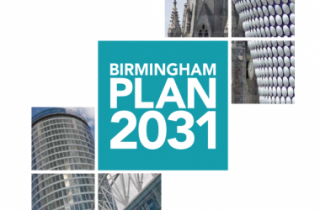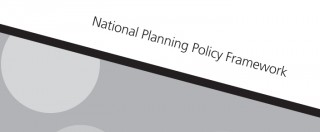One of the more controversial elements of the NPPF since its release in 2012 is the "presumption in favour of sustainable development" listed in Paragraph 14. In fact, some commentators proclaimed that this would "open the floodgates" to a plethora of unrestricted development, especially when considering that where the Development Plan is absent, silent or out of date, permission should be granted unless "any adverse impacts of doing so would significantly and demonstrably outweigh the benefits, when assessed against the policies in this Framework taken as a whole".
It has often been construed that this presumption 'automatically' applies to development, unless there are specific polices within a development plan or other material considerations that indicate otherwise. More and more however, inspectors are determining that in order for the presumption to apply, development must first be demonstrated to be sustainable, rather than it being 'assumed' when making decisions on planning applications. A key case here is appeal decision APP/C3430/A/13/2194005, where PJ Planning successfully represented South Staffordshire Council in fighting an appeal against the refusal to grant planning permission.
Definitions for sustainability have evolved dramatically since 1987 and Our Common Future, where sustainable development was cited as being: "Development that meets the needs of the present without compromising the ability of future generations to meet their own needs.". Whilst this is still the most common definition of sustainable development used by academics and policy makers on an international scale, the NPPF includes its own definition of sustainable development in Paragraph 7 in order to describe how this should be interpreted on a national, and subsequently local scale. This states:
There are three dimensions to sustainable development: economic, social and environmental. These dimensions give rise to the need for the planning system to perform a number of roles:
- an economic role – contributing to building a strong, responsive and competitive economy, by ensuring that sufficient land of the right type is available in the right places and at the right time to support growth and innovation; and by identifying and coordinating development requirements, including the provision of infrastructure;
- a social role – supporting strong, vibrant and healthy communities, by providing the supply of housing required to meet the needs of present and future generations; and by creating a high quality built environment, with accessible local services that reflect the community’s needs and support its health, social and cultural well-being; and
- an environmental role – contributing to protecting and enhancing our natural, built and historic environment; and, as part of this, helping to improve biodiversity, use natural resources prudently, minimise waste and pollution, and mitigate and adapt to climate change including moving to a low carbon economy.
Paragraph 8 of the Framework then describes how these three roles must be assessed together rather than in isolation, as they are not "mutually dependant". The latter part of the paragraph here states how "to achieve sustainable development, economic, social and environmental gains should be sought jointly and simultaneously through the planning system".
In appeal decision APP/C3430/A/13/2194005, the inspector is implicit in stating that whilst there is indeed a "general" presumption in favour of sustainable development, this needs to be engaged by meeting the criteria in Paragraph 7 and 8. In this case, the inspector determined that there was questionable economic benefit, no real social value and harm to the environment. In light of this, Paragraph 54 of the appeal decision, considering Paragraphs 7 and 8 together states:
it does not represent a sustainable form of development to which the national policy presumption in favour should apply.
Effect on Decision Making
Whilst the Development Plan and Material Considerations should be taken into account as a whole, the importance of this decision is significant. The methodology is clear that in order for the presumption to apply, it must first be specifically determined if the development meets the criteria outlined in Paragraphs 7 and 8 to be classified as sustainable.
This therefore has an impact on how planning applications, in particular supporting evidence is prepared, and the means by which decision makers should determine them. In particular, it is seemingly no longer enough to simply state that because a development is in a sustainable location, or that the lack of any development plan policy makes a site automatically sustainable. This must be proven, and the need to do so will likely vary from application to application.
Insofar as decision making, local authorities will be under greater pressure to test the true sustainable merits of any planning application before applying the presumption. This must be done with trepidation however, as a mis-assessment and subsequent wrong usage of Paragraph 14 could leave the local authority open to appeal or legal challenge.
More Information
Should you require more information on how this may affect your development or local community, please do not hesitate to contact us. We offer a wide variety of planning services, and are happy to discuss how this report may impact you.



